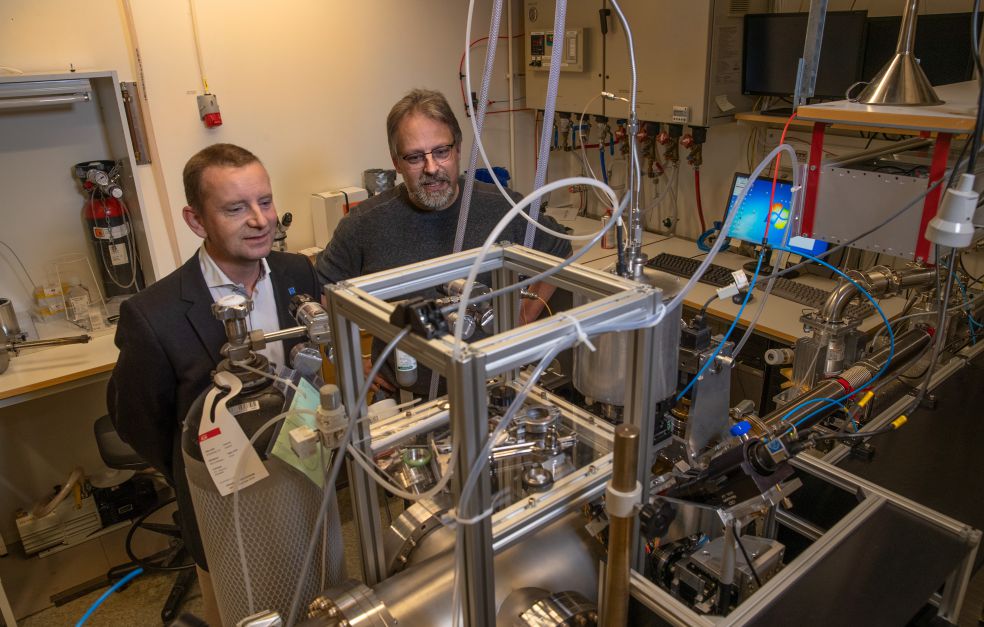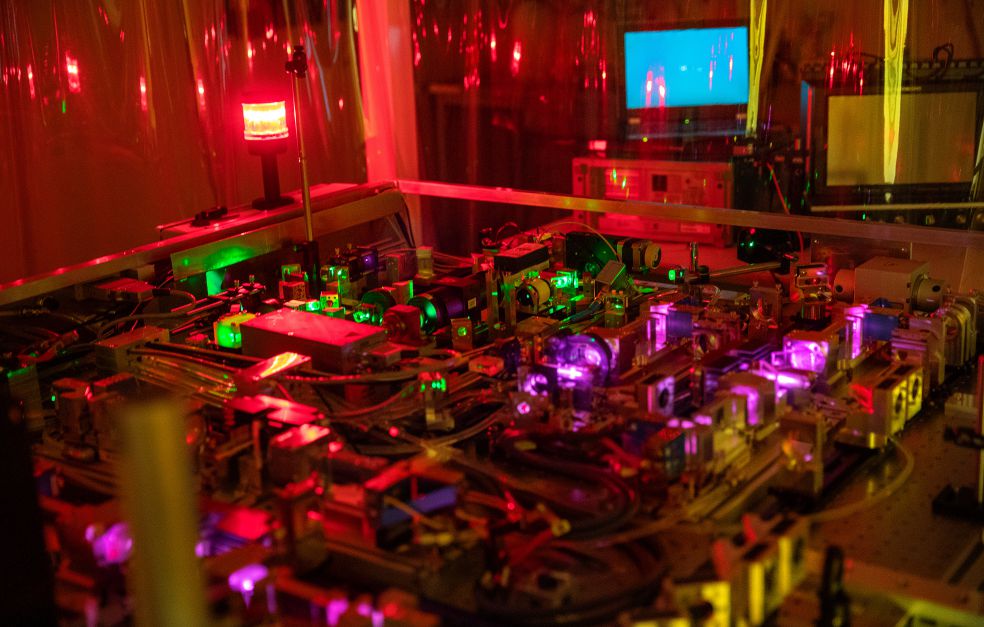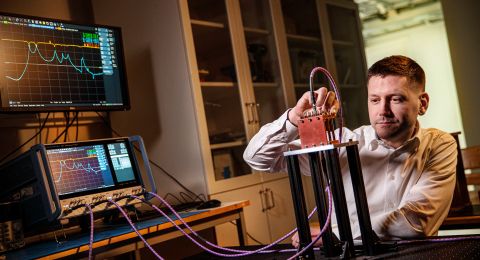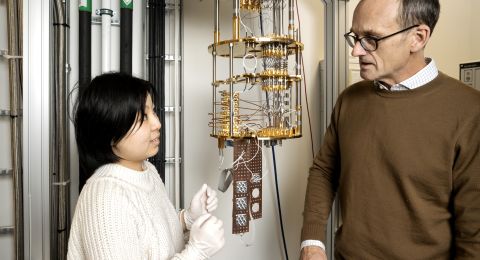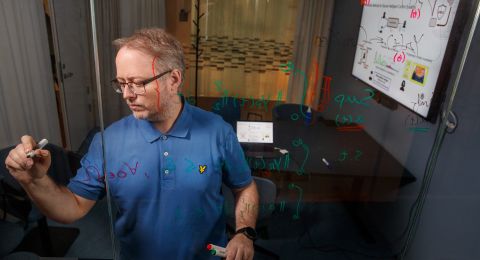
Project Grant 2018
Novel Transient States in Quantum Matter
Principal investigator:
Oscar Tjernberg, Professor of Strongly Correlated Systems
Co-investigators:
KTH Royal Institute of Technology
Jonas Weissenrieder
Nordita – Nordic Institute for Theoretical Physics
Alexander Balatsky
Institution:
KTH Royal Institute of Technology
Grant in SEK:
SEK 30,000,000 over five years
In a project entitled “Novel Transient States in Quantum Matter”, the researchers are exploring the two fields of superconductivity and topological materials. The basic question is the same in both fields: what happens when a material transitions from one phase to another?
They are using high-energy light pulses in the hope of pushing different materials beyond the limit so they become superconducting or topological. The process is also recorded using a technique in which Tjernberg’s research team are world leaders.
Ghostly quantum phenomena
Superconductors and topological materials are both classified as quantum materials. They exhibit a number of phenomena that might be considered a little spooky. Tjernberg, who is Professor of Strongly Correlated Systems at KTH Royal Institute of Technology, elaborates:
“For instance, topological materials have currents of polarized electrons on their surface, but do not conduct current at all within the material itself. They have properties that many believe will be central to the development of new forms of information technology, such as quantum computers and new forms of sensor.”
It was discovered way back in the early 1900s that certain materials conduct current without any resistance at all at extremely low temperatures (about minus 270 degrees Celsius). But it was not until 1986 that scientists discovered that the phenomenon can also occur at much higher temperatures (i.e. around minus 200 degrees Celsius).
“It’s now more than thirty years since the discovery of high-temperature superconductors, but unlike superconductivity at low temperatures, no-one yet knows why it occurs. A Nobel Prize likely beckons for anyone able to explain it.”
Examining phase transitions
The path to understanding involves study of the processes taking place when a material transitions from one phase to another. What happens when the boundary is crossed?
“No-one yet knows how the transition takes place – whether it’s the electrons interacting, or whether it occurs via the atomic nuclei. Maybe it’s a combination,” says Tjernberg.
The approach the researchers have chosen makes use of the fact that the various mechanisms operate at different speeds. If they can record the process as it occurs, they may be able to understand the mechanisms that control it. In order to obtain the sharpest images possible, they have chosen to study how the electrons “talk” to the atomic nuclei, and via the nuclei then with each other.
“This communication is slower, which enables us to obtain a sharper image. If we are in luck, that will be where interesting things happen. If not, at least we will have eliminated that alternative.”
Jonas Weissenrieder’s research team is also taking part in the project. They specialize in examining the movements of atoms using high-speed electron microscopy. Meanwhile, Tjernberg is liberating electrons with the help of photoelectron spectroscopy to see where they come from and what energy they have. And Alexander Balatsky, a theoretician, is leading a team modeling various scenarios.
“We send in an initial light pulse, which agitates the atomic nuclei in the sample. Jonas’ team then sends in a pulse of electrons to see how they move. And my team uses a second light pulse to see what happens to the electrons. Then we talk with Alexander so we can understand what we see,” Tjernberg explains.
Making movies
The result is a sequence of recordings showing how the electrons are behaving in relation to the atomic nuclei. It is hoped that the “movie” will answer the question of how a material transitions from one phase to another. It may also explain why superconductivity can occur at high temperatures, and perhaps offer a recipe for a superconductor that works at room temperature.
Plus a Nobel Prize in Physics, of course, for what could go wrong? He laughs heartily:
“A billion things can go wrong on the experimental side.”
Laser beams must be generated and focused with micrometer precision. The experiments have to be carried out in a vacuum so devoid of air that it constitutes only one hundred-thousandth of a millionth of an atmosphere. The right result also demands extremely short light pulses, measured on a scale of femtoseconds, which is one millionth of a billionth of a second. And much higher energy is required than that generated by conventional lasers.
“We need to convert the laser light from the visible spectrum to wavelengths approaching X-rays. To do so, we are using a technique called high-harmonic generation, by which we join up a number of photons to form a single one with much higher energy.”
Next generation technology
Experiments of this kind normally take place at a rate of several thousand pulses a second. But to succeed, this experiment requires hundreds of thousands of light pulses every second. That is why next generation technology is being brought in at a brand-new laboratory at the AlbaNova University Centre, Stockholm. It is the third generation since Tjernberg began researching in the early 1990s.
“We’ve found a project with the prospect of a Nobel Prize shimmering in the distance – a project in which we hope to learn a great deal along the way. So there’s really no risk of failure – only varying degrees of success.”
Text Magnus Trogen Pahlén
Translation Maxwell Arding
Photo Magnus Bergström

